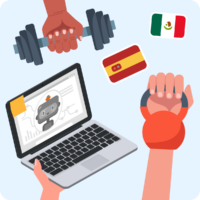A common use of
estar is to express feelings and emotions. For example:
🟢 “Ana está bastante contenta en su trabajo, sin embargo está un poco nerviosa porque su jefe a menudo está enfadado.”
Start by going through this lesson on estar for feelings/emotions where you’ll see plenty of examples:
A2 Estar for feelings / emotions
Then, spot this specific use of estar in our gapfill exercise as you find out what happened at Javier’s party and explore other common situations that use estar (along with its inseparable partner, ser):
B1 En la fiesta de Javier
And guess who’s going to be very happy this week? Dads in Mexico! Why? Because they’ll be celebrating Father’s Day soon.
¡Los papás estarán muy contentos!
Brush up on your reading and listening skills with this heartwarming Father’s Day story:
B2 Día del Padre en México
Ready to take your learning of estar even further? Silvia is excited to share her notebook with you so you can do just that! Click the orange Test your knowledge button or add it to your saved notebooks to kwiz on later. (Premium only)
Find out more about Kwiziq Notebooks and how they can help you organize your learning.
For those feeling the itch to dig deeper into the two Spanish verbs for “to be,” check out our dedicated page on ser and estar. ☺️
✨ Want more?
Explore more reading and fill-in-the-blanks activities across all levels to get even more confident with verbs like estar – and beyond!

